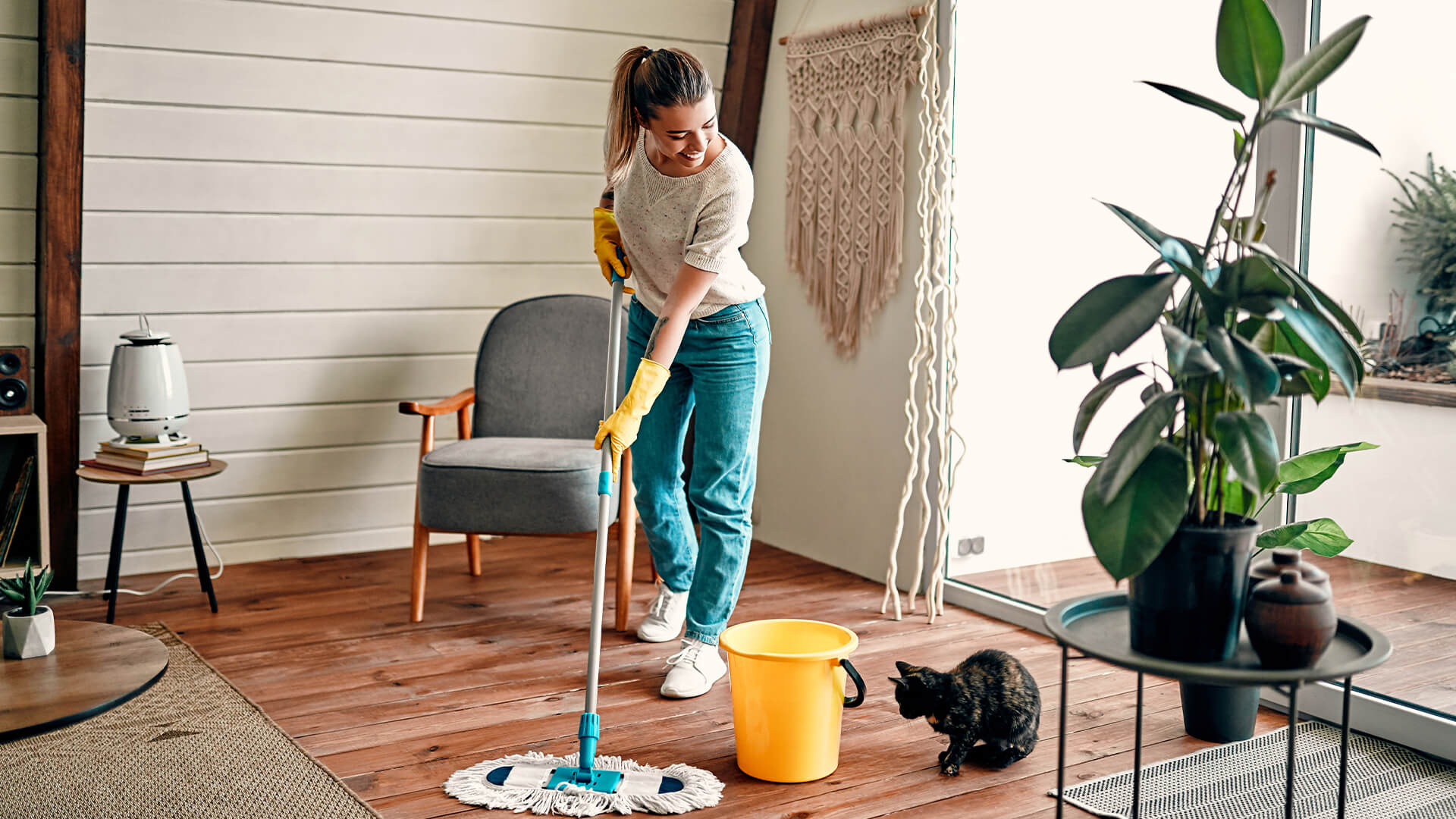Are red wine stains still haunting you post-party season? Or has your new year DIY resulted in some paint spills that you can’t quite get rid of? Perhaps your children have gone a bit wild with the felt tips over the festive period. Whatever the stain, there’s usually a way of removing it – but you may have to act quickly.
That’s why Luxury Flooring & Furnishings have determined a ranking system to reveal the worst spills for your floors – based on absorption time, and difficulty to remove the stain.
To help you tackle the worst floor stains, expert in flooring and Head of Design, Carolina Hansson has offered her top tips on cleaning common spills and how to remove them from solid wood flooring, engineered wood flooring, laminate and vinyl.
Below are the top 3 worst items to spill, along with advice on how to get rid of the stains they leave behind.
Bleach
As a highly corrosive material, bleach is a particularly effective household cleaning agent but its alkaline nature also means that it can be very damaging to your flooring.
Carolina says “Ideally with a bleach spill you should act as soon as possible, as it can stain very quickly. As soon as you spill the bleach, you should grab a damp cloth or mop and wipe the affected area, removing any remaining product.
“Depending on the type of flooring you have, there are different ways to treat the stain:
“If you have solid wood flooring, the best option may be to sand down the stain with sandpaper. This is because solid wood flooring is naturally very porous and will soak up the bleach, which may cause some discolouration. By sanding down the stained area, you can restore the wood to its original colour and texture. If your flooring is laid in parquet style, be careful to sand the whole plank so that it matches the rest of the floor. Afterwards you should use a sealant and varnish to seal the wood to ensure no further damage.
“For vinyl or laminate flooring, cleaning options are a bit trickier. As a general rule, you shouldn’t use bleach as a cleaning agent on vinyl or laminate floors, as it can cause a lot of damage, even when diluted. If you do spill bleach on your floors, you should wipe it up immediately with a cloth and cold water. Left too long, it will cause permanent damage and your floor may need to be replaced.”
Ink
Whether it’s from a felt tip or an old school fountain pen, ink stains can be very damaging to your floors.
Carolina suggests: “The first thing to do after an ink spill is to soak up the liquid with kitchen roll or something similar. Whilst it might be tempting to rub the area to get out the stain, you shouldn’t do this as it will push the pigment further into the grain.
“If you have solid wood flooring you can treat the stain with surgical spirit or rubbing alcohol, applied gently to the area with a soft cloth. If you’re trying this method, you should apply the solution sparingly as too much can have the opposite effect.
“For floors with a strong sealant like laminate or vinyl flooring, ink stains can be removed by spraying hairspray into kitchen roll and wiping the floor. This works better than stronger alcohol-based liquids and is less likely to cause damage.”
Red wine
With a high pigmentation and thin consistency, red wine is a nightmare spill that many of us have likely encountered.
Carolina advises: “It may be surprising, but soda water is a great antidote to a red wine spill. The carbonation in the water helps to dissolve the pigmentation of red wine and can prevent a bad stain. Gently apply the water over the affected area and leave it to settle for around 30 seconds to a minute. Then, use a paper towel to soak up all of the liquid.”
































